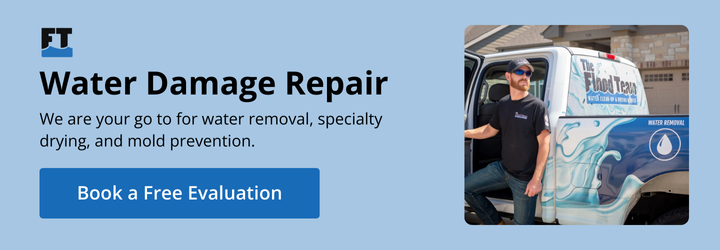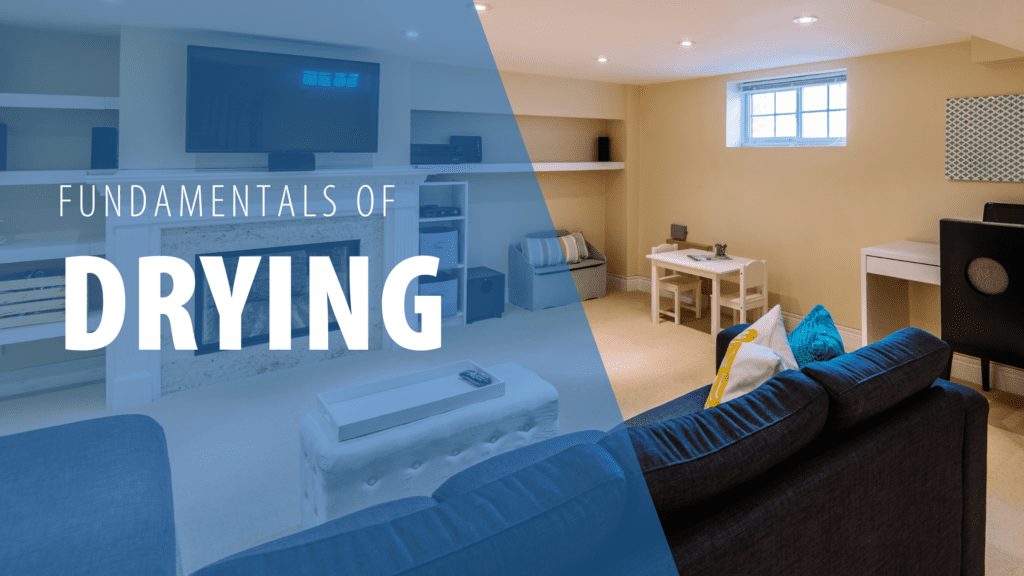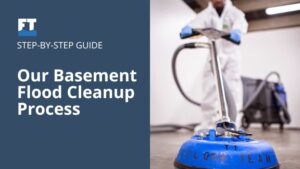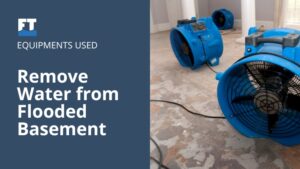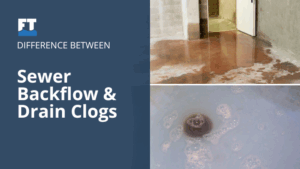Drying your home after a water damage loss can be difficult. It takes attention to detail and a scientific approach. But drying can become less difficult when you remember four items that effect the quality of your drying environment. The drying environment is the established area that you are trying to dry. These four points to pay attention to make up the fundamentals of drying.
The four fundamentals are heat, drying surface, air flow and proximity to the water. Change any of these in a positive way and you will improve the drying environment. If you are having issues reaching a dry standard, then this is where you should look first to help improve the situation.
Heat – To speed up drying time you want to raise the temperature of the environment. An increase in temperature causes an increase in the vapor pressure of the water in the environment. An increase in vapor pressure in turn allows the water do evaporate more quickly. If you can contain the heat to the wet surface it will work the best.
Drying Surface – For maximum effect you want to dry the air at the wet surface. This will lower the specific humidity and vapor pressure of the air at the surface. By using dehumidifiers and proper ventilation we can keep evaporated water away from the wet surface allowing for more evaporation. The drier the air in the environment, the faster we can dry your surfaces.
Air Flow – Air flow is key the same way that drying surface is key. When water evaporates from a wet surface it creates a little air bubble above the surface that has a very high humidity. Air flow moves the recently evaporated water away from that surface. When this happens it makes space for more water to evaporate. The same way blowing on your coffee speeds up the cooling process, increasing air flow in your water loss environment will speed up the drying process.
Proximity to the Water – This step is one of the harder ones to do. Fixing problems with proximity can have a very big impact. Proximity to the Water means that you need to try and do the other three things we just talked about as close to the actual water loss as possible. The closer you can get your dehumidifiers and air movers to the actual site of water loss the faster you can expect drying.
Because we’re working in homes with very different spaces sometimes it is hard to get heating, drying and air flow close to the wet surface. The goal is to get as close as possible, monitor the results, and then reposition as needed. A water damage professional will take measurements regularly to make sure that the positioning of these elements in their drying environment are working correctly. This along with the extraction that should have already been done will help get your home back to normal quickly.
